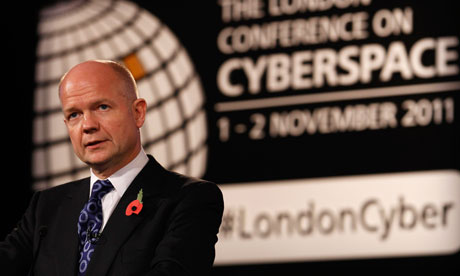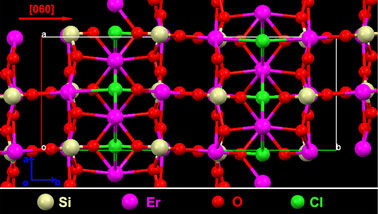 Researchers in Zurich, Switzerland, are developing nanomagnets that could someday strip potentially harmful substances from the blood. The technology might be used to treat people suffering from drug intoxication, bloodstream infections, and certain cancers.
Researchers in Zurich, Switzerland, are developing nanomagnets that could someday strip potentially harmful substances from the blood. The technology might be used to treat people suffering from drug intoxication, bloodstream infections, and certain cancers.I write Scifi. I've moved the blog to http://www.softmachine.net You'll find all the new stuff there @NathanMcGrathSF. Nathan.
Wednesday, 30 November 2011
Fancy Nanoparticles cleaning your blood?
 Researchers in Zurich, Switzerland, are developing nanomagnets that could someday strip potentially harmful substances from the blood. The technology might be used to treat people suffering from drug intoxication, bloodstream infections, and certain cancers.
Researchers in Zurich, Switzerland, are developing nanomagnets that could someday strip potentially harmful substances from the blood. The technology might be used to treat people suffering from drug intoxication, bloodstream infections, and certain cancers.Tuesday, 29 November 2011
New Software for nanoscale designs target global industries
(Nanowerk News) Accelrys, Inc has announced the release of Materials Studio® 6.0 a State-of-the-art modelling and simulation environment that combines the accuracy of quantum methods with the speed of atomistic methodologies.
 "Nanoscience will play a key role in the next generation of materials used in automobiles, aircraft, electronics and many other industries," said Professor Bjoern Winkler of the University of Frankfurt. "Materials Studio provides us with the computational science we need to help understand and develop these materials and this release is the most powerful yet."
"Nanoscience will play a key role in the next generation of materials used in automobiles, aircraft, electronics and many other industries," said Professor Bjoern Winkler of the University of Frankfurt. "Materials Studio provides us with the computational science we need to help understand and develop these materials and this release is the most powerful yet."Read the full article
Accelrys' Materials Studio Makes Big Impact with "Small" Science
Friday, 25 November 2011
Carbon nanotube forest camouflages 3-D objects
Thursday, 24 November 2011
Aww, Real Little Cyborgs - or is that Cybugs?
The group is investigating ways to harvest energy from the creatures to power sensors and other equipment fastened to their bodies.
The team has created an energy scavenging device that is attached close to the insects' wings.
LHC antimatter anomaly hints at new physics
"The Large Hadron Collider has turned up differences in how particles of matter and antimatter decay that the reigning standard model of physics may not be able to explain
WE ARE here thanks to a curious imbalance in the universe. To the best of our knowledge, the universe began with equal, or nearly equal, amounts of matter and antimatter. Because these particles annihilate on contact, they should have destroyed each other long ago in a blaze of radiation, leaving little if anything behind to form stars, planets and people. Clearly, that didn't happen.
The hunt for the special something that might have skewed the universe in favour of matter occupies the best minds in physics. Compelling signs of such lopsided physics have emerged at the Large Hadron Collider at CERN near Geneva in Switzerland. It is the first sign of new physics at the LHC and could provide a boost for the theory of supersymmetry, which adds a zoo of new particles to the ones we already know. "We are getting excited," says Yuval Grossman of Cornell University in Ithaca, New York."
Tuesday, 22 November 2011
Can't get enough reality?
The technology could allow wearers to read floating texts and emails or augment their sight with computer-generated images, Terminator-style.Initial safety tests in rabbits have gone well, with no obvious adverse effects, the researchers have renewed faith about the device's possibilities.
They envisage hundreds more pixels could be embedded in the flexible lens to produce complex holographic images. For example, drivers could wear them to see journey directions or their vehicle's speed projected onto the windscreen. Similarly, the lenses could take the virtual world of video gaming to a new level."
Monday, 21 November 2011
Illinois water system easily hacked
Hacker busts water supply by getting in via the 3 letter password.
Bet it was H2O!
Saturday, 19 November 2011
The Infinite Monkey Cage
Science and humour podcast.
An inspired and inspiring mix. Ideal brain food for scifi writers and readers.
http://downloads.bbc.co.uk/podcasts/radio4/timc/rss.xml
More Extreme Weather On The Way
Have we gone beyond the tipping point or is there time to start cleaning up our act and save the planet?
Yes - Faster than speed of light!
The team which found that neutrinos may travel faster than light has carried out an improved version of their experiment - and confirmed the result.
If confirmed by other experiments, the find could undermine one of the basic principles of modern physics.
The Ultimate 'stand out from the crowd' accessory!
Manufacturer's Description
Developed by renowned French designer David Turpin, the MoshiMoshi 01H Retro Handset combines high style with high functionality, uniting the comfort and safety of a handset telephone with the convenience of the mobile phone. The chic design combines classic style with modern elegance, resulting in a fashionable and comfortable handset finished with a soft luxurious texture.
Turn back the clock with the MoshiMoshi 01H Retro Handset. Click here for a larger image.
Key Features
Compatible with all 3.5mm jack mobile phones and computers, including iPhone, BlackBerry, iPad, and the latest MacBooks.
One touch button for convenient pick-up/hang-up directly from the handset (not all mobile phone support function).
Noise-reducing technology for a crisp and polished sound.
Luxurious soft-touch finish for ultimate comfort and feel.
Eliminates up to 99 percent of the radiation absorbed compared to a direct use of mobile phones.
Using DNA To Shape Nanostructures
Chemists and materials scientists are trying to learn to build ultra-small, precisely ordered structures for use in optics, electronics, and other applications. Writing in the journal Science, Chad Mirkin and colleagues describe a way to use snippets of DNA to tailor the shape and size of crystal structures, tweaking them to fit specific uses.
"we can program DNA and building blocks to do that. So the idea here is to take tiny bits of matter, nanoparticles, and to attach strands of DNA that have a preconceived and designed code that then guides them through an assembly process based upon known DNA recognition properties to assemble into macroscopic structures that have properties that are defined by the arrangement of those particles within the extended structure."
Looking ahead
When I was writing the first 'Cloud' Book, I was just hypothesising that at some point DNA models could be used to create nanoparticles.I didn't think that the design of the Nanoparticles created by Alister's mother, modelled on the structure of adolescent neurons - fast learning and creative -was closer to reality that I'd imagine. This opens up a whole new world of genetic and nanotechnology. Meanwhile other people are working on nanotechnology that mimics the way parts of the brain works.
The paths of DNA science, nanotechnology, computing, neuroscience are converging with greater frequency and variation at an increasing rate.
Why is all this possible?
Simply because if you go down far enough into the any science - biological or material and it's all chemistry, if you go down even further and it's all physics. And it's the knowledge about and ability to manipulate matter on such a nano and chemical scale, where you are down to the common ground of Stuff, that allows this convergence.
New 'smart' material could help tap medical potential of tissue-penetrating light
ScienceDaily (Nov. 16, 2011) — Scientists
are reporting development and successful
initial testing of the first practical "smart"
material that may supply the missing link
in efforts to use in medicine a form of
light that can penetrate four inches into
the human body. Their report on the new
polymer or plastic-like material, which has
potential for use in diagnosing diseases
and engineer new human tissues in the
lab, appears in ACS' journal
Macromolecules .
Friday, 18 November 2011
A.I as good as thought?

Scientists are getting closer to the dream of creating computer systems that can replicate the brain.
Researchers at the Massachusetts Institute of Technology have designed a computer chip that mimics how the brain's neurons adapt in response to new information More on the Jump here >.AI moves closer with brain chip
Thursday, 17 November 2011
New material can enhance energy, computer, lighting technologies
(Nanowerk News 16 Nov 2011) Arizona State University researchers have created a new compound crystal material that promises to help produce advances in a range of scientific and technological pursuits.
ASU electrical engineering professor Cun-Zheng Ning says the material, called erbium chloride silicate, can be used to develop the next generations of computers, improve the capabilities of the Internet, increase the efficiency of silicon-based photovoltaic cells to convert sunlight into electrical energy, and enhance the quality of solid-state lighting and sensor technology.
Ning's research team of team of students and post-doctoral degree assistants help synthesize the new compound in ASU's Nanophotonics Lab in the School of Electrical, Computer and Energy Engineering, one of the university's Ira A. Fulton Schools of Engineering.
The lab's erbium research is supported by the U.S. Army Research Office and U.S. Air Force Office of Scientific Research. Details about the new compound are reported in the Optical Materials Express on the website of the Optical Society of America ("Single-crystal erbium chloride silicate nanowires as a Si-compatible light emission material in communication wavelength").
Graphene the next generation of chips.
ScienceDaily (Oct. 9, 2011) — The world's thinnest, strongest and most conductive material, discovered in 2004 at the University of Manchester by Professor Andre Geim and Professor Kostya Novoselov, has the potential to revolutionize material science.
Wednesday, 16 November 2011
New computer chip models how neurons communicate with each other at synapses
ScienceDaily (Nov. 15, 2011) — For decades, scientists have dreamed of building computer systems that could replicate the human brain's talent for learning new tasks.
MIT researchers have now taken a major step toward that goal by designing a computer chip that mimics how the brain's neurons adapt in response to new information. This phenomenon, known as plasticity, is believed to underlie many brain functions, including learning and memory.
Monday, 14 November 2011
DNA based nanomaterials get another boost
Controlled growth of DNA nanomaterials opens new applications in nanoelectronics
Nanowerk News) DNA-based nanomaterials are
key precursors for the bottom- up fabrication of
a range of high-performance nanoscale devices
such as biosensors and nanoelectronics because
of their ability to self-assemble into well-defined
structures. However, the lack of control
encountered during the deposition of these
nanostructures on surfaces has hampered their
application in practical devices.
Sung Ha Park, Yonghan Roh and colleagues
from Sungkyunkwan University and the
Samsung Advanced Institute of Technology in
Korea have now developed a surface-promoted
method that allows for the precise control of
DNA crystal growth on silica substrates
("Coverage Control of DNA Crystals Grown by
Silica Assistance" ).
Tuesday, 8 November 2011
The ultimate all-in-one device.
Nanoskin for your touchy, feely android (or exosuit)
Sunday, 6 November 2011
Cybercrime, a multibillion dollar business!
The Guardian has a pretty good artice on how the UK is progressing and working on tackling cybercrime

"Efforts to combat cybercrime concentrate on enhanced security, but intercepting the kids drawn into its web might prove better"
A multi-billion dollar business, a recession, thousands kicked from work every week, no jobs for kids. Hmm, The govt's got its work cut out!
Popularity of nanotechnology taking off
(Nanowerk News) A record crowd of more than 1,200 visitors of all ages from throughout New York State received an inside look at the exciting world of nanotechnology today when they participated in Community Day at the College of Nanoscale Science and Engineering (CNSE) of the University at Albany, one of the highlights of CNSE's one-of-a-kind community and educational outreach initiative known as "NANOvember."
Here's the link to Nanovember
Wednesday, 2 November 2011
No Hiding Place
Thinking of taking your computer or smartphone abroad? You can safely assume that at any point, a government 'cyber-crime or anti-terrorist team can hack into your computer to see what you are up to.
Just dont accidentally snap.a picture of a secret government building or agent, or email/chat/sms something disrespectful while you are out there.
Governments turn to hacking techniques for surveillance of citizens http://gu.com/p/33357
Tuesday, 1 November 2011
A "Small" History of Nanotechnology
For those of you flummoxed by all this nanotechnology stuff, here's one of the best sites around for a fascinating and very readable introduction to nanotechnology and how it all kicked off.
DNA synthesis and nanotechnology.
The possibility of creating nanoparticles with complex functionality such as interfacing with the human nervous system and able to network wirelessly, powered by the bodies own energy requires the convergence of several different technologies. nanotechnology obviously and manipulation of DNA.
Success in both these fields is progressing faster with each new discovery and innovation.
But convergence is always the rule.
Here we have news of DNA being synthesised and folded into unique nanoscale structures - another step in the building blocks to complex nanoparticles operating within the nervous system
(Nanowerk News) In the emerging field of synthetic biology, engineers use biological building blocks, such as snippets of DNA, to construct novel technologies. One of the key challenges in the field is finding a way to quickly and economically synthesize the desired DNA strands. Now scientists from Duke University have fabricated a reusable DNA chip that may help address this problem by acting as a template from which multiple batches of DNA building blocks can be photocopied. The researchers have used the device to create strands of DNA which they then folded into unique nanoscale structures.
Add this development to my other blog post
View Events, Lectures, and Series Information










